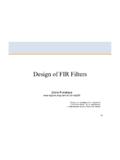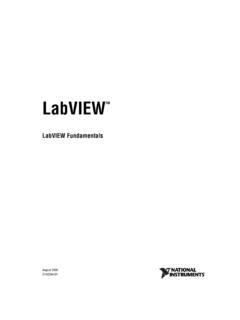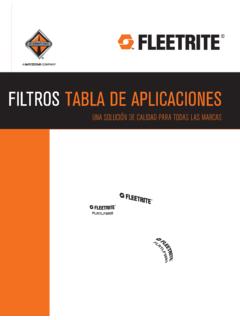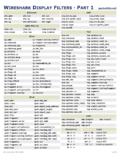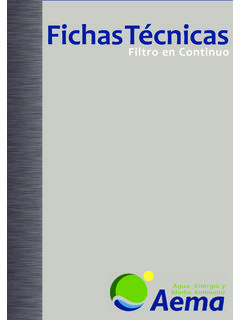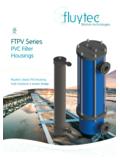Transcription of Filter Design in Thirty Seconds - Vyssotski
1 Application ReportSLOA093 December 20011 Filter Design in Thirty SecondsBruce CarterHigh Performance AnalogABSTRACTNeed a Filter fast? No theory, very little math just working Filter designs, and in a hurry?This is the right .. 22 Low Pass Filter .. 43 High Pass Filter .. 54 Narrow (Single Frequency) Band Pass 65 Wide Band Pass Filter .. 76 Notch (Single Frequency Rejection) Filter .. 87 Band Reject Filter .. 9 Appendix A Standard Resistor and Capacitor 12 Appendix B Filter Notes (for the More Technically Minded) .. 13 FiguresFigure Pass 2 Figure Pass 2 Figure (Single Frequency) Band 3 Figure Band Pass .. 3 Figure Filter Single Frequency Rejection .. 3 Figure Reject Filter .. 4 Figure Pass Filter for Supplies .. 4 Figure Pass Filter for a Single 4 Figure Pass Filter for Supplies .. 5 Figure 10. High Pass Filter for a Single 5 Figure 11. Narrow Band Pass Filter for Supplies.
2 6 Figure 12. Narrow Band Pass Filter for a Single 6 Figure 13. Wide Band Pass Filter for Supplies .. 7 Figure 14. Wide Band Pass Filter for a Single 7 Figure 15. Narrow Band Pass Filter for Supplies .. 8 Figure 16. Narrow Band Pass Filter for a Single 9 Figure 17. Band Reject Filter for Supplies .. 10 Figure 18. Band Reject Filter for a Single 10 SLOA0932 Filter Design in Thirty Seconds1 IntroductionThis document is intended for designers that do not have the time to check Filter theory in oldcollege textbooks and try to translate transfer equations into something that can be put intoproduction. This is like looking at the back of the textbook for the answer. Speaking of the backof the book Appendix B contains a brief introduction to the Filter circuits given here, and thelimitations of this quickie approach to Design a Filter , four things must be known in advance: The power supplies available: positive / negative or only positive (single supply) The frequencies that need to be passed, and those that need to be rejected.
3 A transition frequency, the point at which the Filter starts to work or a center frequencyaround which the Filter is symmetrical. An initial capacitor value pick one somewhere from 100 pF for high frequencies to Ffor low frequencies. If the resulting resistor values are too large or too small, pick anothercapacitor Let s Design the Filter . Pick the Filter type from one of the following 6 options thatrepresents the frequencies to be passed (shaded area): Figure 1. Low Pass Filter Go to Section 2 Figure 2. High Pass Filter Go to Section 3 SLOA093 Filter Design in Thirty Seconds3 Figure 3. Narrow (Single Frequency) Band Pass Go to Section 4 Figure 4. Wide Band Pass Go to Section 5 Figure 5. Notch Filter Single Frequency RejectionSLOA0934 Filter Design in Thirty Seconds Figure 6. Band Reject Filter2 Low Pass FilterR2 Vin-SupplyC1C2-+R1+SupplyVout Figure 7. Low Pass Filter for Supplies +Supply-++Supply R4 100 k R3 100 k Cout Vin C1 Cin C2 Vout R2R1 Figure 8.
4 Low Pass Filter for a Single SupplyDesign Procedure: Pick C1: _____ Calculate C2 = C1 * 2: _____SLOA093 Filter Design in Thirty Seconds5 Calculate R1 and R2 = Frequency*C**1221 : _____ (pick a standard value fromAppendix A).For the single supply case only: Calculate Cin = Cout = 100 to 1000 times C1 (not critical): _____DONE3 High Pass FilterVoutC2R1C1 Vin-Supply-++SupplyR2 Figure 9. High Pass Filter for SuppliesR1R2+SupplyC1 Vout-+C2 Cout+Supply / 2 Vin Figure 10. High Pass Filter for a Single SupplyDesign Procedure: Pick C1 = C2: _____ Calculate R1: Frequency*C**121 : _____ (pick a standard value fromAppendix A).SLOA0936 Filter Design in Thirty Seconds Calculate R2: Frequency*C**1221 : _____ (pick a standard value fromAppendix A).For the single supply case only: Calculate Cout = 100 to 1000 times C1 (not critical): _____DONE4 Narrow (Single Frequency) Band Pass FilterNOTE: These circuits include a gain of 10 (20 dB) at the center +Supply-SupplyR1C1-+R2 VinVoutR3 Figure 11.
5 Narrow Band Pass Filter for SuppliesR3 Cout-+CinC2R1R4C1R2 Vout+Supply+Supply / 2 Vin Figure 12. Narrow Band Pass Filter for a Single SupplyDesign Procedure: Pick C1 = C2: _____SLOA093 Filter Design in Thirty Seconds7 Calculate R1 = R4: Frequency*C**121 : _____ (pick a standard value fromAppendix A). Calculate R3 = 19 * R1 Calculate R2 = 191 RFor the single supply case only: Calculate Cin = Cout = 100 to 1000 times C1 (not critical): _____DONE5 Wide Band Pass FilterNOTE: The start and ending frequencies of the band should be at least five times +Supply-Supply-Supply-+C1C2R2C1 VinC2-+R1R1+SupplyVout Figure 13. Wide Band Pass Filter for SuppliesC1 CoutC2R1R2R1C2C1-++Supply / 2-+VinR2+Supply+SupplyVout Figure 14. Wide Band Pass Filter for a Single SupplyDesign Procedure: Go to Section 3, and Design a high pass Filter for the low end of the Design in Thirty Seconds Go to Section 2, and Design a low pass Filter for the high end of the band.
6 For the single supply case only: Calculate Cin = Cout = 100 to 1000 times C1 in the low pass Filter section (not critical):_____DONE6 Notch (Single Frequency Rejection) Filter R3-+R2 Vout -SupplyR4R1 -Supply-+C2R6 100 k R5 100 k C1 +SupplyVin +Supply Figure 15. Narrow Band Pass Filter for SuppliesSLOA093 Filter Design in Thirty Seconds9 R4-+R3+Supply / 2R1 +SupplyR2C1 +SupplyR5 100 k C2 Vin Vout-+Cin Cout R6 100 k Figure 16. Narrow Band Pass Filter for a Single SupplyDesign Procedure: Pick C1 = C2: _____ Calculate R3 = R4: Frequency*C**121 : _____ (pick a standard value fromAppendix A). Calculate R1 = R2 = 20 * R3 For the single supply case only: Calculate Cin = Cout = 100 to 1000 times C1 (not critical): _____DONE7 Band Reject FilterNOTE: The start and ending frequencies of the band to be rejected should be at least fifty Design in Thirty Seconds +SupplyR2 100 k -+C1 +SupplyR1 Vin C2 -+-SupplyC1 +SupplyC2 100 k Vout-+R2 -Supply100 k R1 -Supply Figure 17.
7 Band Reject Filter for Supplies C1 100 k -++Supply / 2100 k 100 k Cin C1 R2 +Supply / 2R1 Cout +Supply+SupplyC2 VoutR1 -+Vin +SupplyR2 C2 -+ Figure 18. Band Reject Filter for a Single SupplySLOA093 Filter Design in Thirty Seconds11 Design Procedure: Go to Section 3, and Design a high pass Filter for the low end of the upper band. Go to Section 2, and Design a low pass Filter for the high end of the lower band. For the single supply case only: Calculate Cin = Cout = 100 to 1000 times C1 in the low pass Filter section (not critical):_____DONESLOA09312 Filter Design in Thirty SecondsAppendix A Standard Resistor and Capacitor ValuesE-12 Resistor / Capacitor , , , , , , , , , , , and ; multiplied by the decade Resistor / Capacitor , , , , , , , , , , , , , , , , , , , , , , , and ; multiplied by the decade Resistor , , , , , , , , , , , , , , , , , , , , , , , , , , , , , , , , , , , , , , , , , , , , , , , , , 3,24, , , 3,48, , , , , , , , , 4,32, , 4,53.
8 Multiplied by the decade Design in Thirty Seconds13 Appendix B Filter Notes (for the More Technically Minded)Low Pass FilterThe Filter selected is a unity gain Sallen-Key Filter , with a Butterworth response articles and books describe this Pass FilterThe Filter selected is a unity gain Sallen-Key Filter , with a Butterworth response articles and books describe this Band Pass FilterThe Filter selected is a modified Deliyannis Filter . The Q is set at 10, which also locks the gain at10, as the two are related by the expression:GainQRRR== +1243A higher Q was not selected, because the op amp gain bandwidth product can be easilyreached, even with a gain of 20 dB. At least 40 dB of headroom should be allowed above thecenter frequency peak. The op amp slew rate should also be sufficient to allow the waveform atthe center frequency to swing to the amplitude Band Pass FilterThis is nothing more than cascaded Sallen-Key high pass and low pass filters.
9 The high passcomes first, so energy from it that stretches to infinite frequency will be low FilterThis is the Fliege Filter topology, set to a Q of 10. The Q can be adjusted independently fromthe center frequency by changing R1 and R2. Q is related to the center frequency set resistorby the following:3221R*Q*RR==The Fliege Filter topology has a fixed gain of only real possibility of a problem is the common mode range of the bottom amplifier in thesingle supply Reject FilterThis is nothing more than summed Sallen-Key high pass and low pass filters. They cannot becascaded, because their responses do not overlap as in the wide band pass Filter NOTICET exas Instruments Incorporated and its subsidiaries (TI) reserve the right to make corrections, modifications,enhancements, improvements, and other changes to its products and services at any time and to discontinueany product or service without notice.
10 Customers should obtain the latest relevant information before placingorders and should verify that such information is current and complete. All products are sold subject to TI s termsand conditions of sale supplied at the time of order warrants performance of its hardware products to the specifications applicable at the time of sale inaccordance with TI s standard warranty. Testing and other quality control techniques are used to the extent TIdeems necessary to support this warranty. Except where mandated by government requirements, testing of allparameters of each product is not necessarily assumes no liability for applications assistance or customer product Design . Customers are responsible fortheir products and applications using TI components. To minimize the risks associated with customer productsand applications, customers should provide adequate Design and operating does not warrant or represent that any license, either express or implied, is granted under any TI patent right,copyright, mask work right, or other TI intellectual property right relating to any combination, machine, or processin which TI products or services are used.
